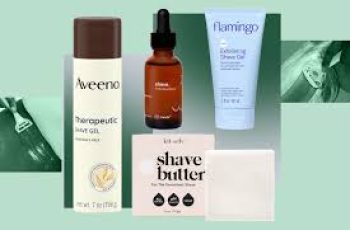
‘Microcoring’ is a minimally invasive facelift alternative – does it work?
When it comes to visible skin aging, there are a plethora of treatments and products to address just about everything. Fine lines, wrinkles, pigmentation and creases all seem to go hand in hand, but the effects of gravity can be the hardest to treat. Skin sags for a variety of reasons, such as aging or weight loss, and until recently there was only one truly effective treatment: a facelift. If the mere mention of the mother of all invasive treatments sends chills down your spine, we have good news. Microcoring is a minimally invasive treatment that allows for scar-free skin removal and targets moderate to severe skin laxity and wrinkles. But what exactly is it? And is it a suitable alternative? Below, two plastic surgeons and a dermatologist break down the pros and cons of microcoring and share whether they recommend the treatment.
What is microcoring?
Microcoring technique (MCT) is a minimally invasive treatment that targets moderate to severe skin laxity and wrinkles. A hollow punch needle is used that, when inserted into the skin, cuts a core the size of the needle’s inner diameter. Compared to microneedling, which involves puncturing the skin without removing tissue, DMCD needles remove a full-thickness core of the skin, resulting in firmer skin and fewer wrinkles. 1
For patients who have been craving a nonsurgical solution to facial sagging and wrinkles, microcoring is the new shiny toy on the shelf. “Microcoring is a relatively new treatment for sagging skin,” notes board-certified plastic surgeon Darren M. Smith, MD, FACS. “The technology is based on the idea that wound healing occurs through processes such as contraction—if there is a hole in the skin, the body will shrink the hole. Microcoring devices such as Ellacor work like a cookie cutter to create small holes in the skin. Four to eight percent of the skin in the treatment area is removed, causing the skin to contract, produce new collagen and elastin, and tighten the skin in that area. The key to success is that the holes created by the microcoring device are small enough that they do not leave scars.”
Benefits of Microcoring
The benefits of microcoring are pretty straightforward, as the technology is specifically designed to tighten the skin. Here are the main benefits:
Tightens sagging skin
Boosts collagen and elastin production
Reduces fine lines and wrinkles
“Microcoring promotes skin tightening by removing a small area of skin and stimulating collagen production,” says double-board certified dermatologist Brendan Camp, MD. “Skin tightening can improve the appearance of sagging or sagging skin, a common problem in people with mature skin. It can also reduce fine lines or wrinkles that appear from normal aging or sun damage.”
How to Prepare for Microcoring
The first step in preparing for microcoring is to talk to your dermatologist to understand the specific needs of your skin. However, there are some general tips you should follow before the treatment.
Avoid blood thinners: “It’s a good idea to avoid blood thinners before the procedure (unless medically necessary) to avoid bruising,” Smith notes.
Minimize other treatments: As with any procedure, “you should not undergo any surgical or home treatments that may irritate the skin in the area you plan to treat,” Smith says. Ask your plastic surgeon or dermatologist for more specific recommendations on what to avoid before treatment.
Avoid tanning: “Avoid tanners and tanning beds,” Smith says. This further helps minimize any irritation or distraction that could conflict with the microcoring procedure.
Don’t Forget the Sunscreen: Last but not least: Wear sunscreen every day to protect your skin. Of course, you should do this even if you’re not preparing for the treatment, as there’s never a good time to get a sunburn.
Also, your dermatologist or plastic surgeon can tell you how to best prepare, so their advice always takes precedence. “Other specific instructions depend on your skin type and skin condition,” Smith says.
What to Expect from Microcoring
Experts advise not to expect too much from microcoring, as the treatment is relatively simple. It usually lasts about an hour, and pain and discomfort during the procedure are minimal, thanks to the local anesthesia used. “Discomfort that occurs afterward can usually be treated with cold compresses and over-the-counter pain relievers,” Camp adds. Redness may also occur.
Microcoring vs. Microneedling
Not surprisingly, microcoring and microneedling are easily confused, as both have similar names and the tools used. Like microcoring, microneedling uses fine needles to pierce the skin to boost collagen production and reduce fine lines and wrinkles. Microneedling can also improve skin texture and is often recommended for treating acne scars. However, the technical details behind microneedling are different.
“Traditional microneedling treatments do not remove any skin,” Camp tells us. “Microneedling creates surface injuries in the skin tissue, which activates the skin’s healing properties and stimulates the production of new collagen. RF microneedling delivers heat to remove some of the dermis [and] creates a stronger response. Fractional CO2 laser treatments use heat to ablate portions of the epidermis and dermis, tightening the skin and stimulating collagen production to improve the appearance of sun damage, fine lines, and wrinkles.”
Microcoring vs. Other Tightening Treatments
Microcoring is by no means the only minimally invasive alternative to facial wrinkle removal surgery. Ultrasound technologies such as ultrasound and radiofrequency also have skin tightening benefits. “RF [radio frequency] and US [ultrasound] treatments, as well as thread lifts, can help tighten the skin and reduce sagging and signs of aging. “You may choose microcoring over other options because it is minimally invasive (unlike thread lifts) and does not use heat or ultrasound energy to achieve its results,” explains double board-certified plastic and reconstructive surgeon Jaimie DeRosa, MD. “Instead, thousands (approximately 10-12,000) microscopic (less than 500 microns) cores of skin are punched out, typically removing 4% to 8% of the treated skin, stimulating the growth of new collagen. The main reason I choose microcoring over other similar treatments is that it does not involve thermal injury, which can be a problem for people with darker skin tones and those who are prone to dark scarring (hyperpigmentation). ”
Can you try microcoring at home?
While the answer is not technically absolute, experts strongly believe that microcoring is best performed in-office by a licensed professional. “While legal requirements vary from state to state, I feel most comfortable with this treatment being provided by a physician,” Smith emphasizes. “Ideally, someone with a thorough understanding of facial anatomy and physiology of aging is best suited to perform these procedures, such as a plastic surgeon, dermatologist, or facial plastic surgeon. These procedures should be performed in the sterile environment of a physician’s office. ”
Experts say that just as important as working with a professional during treatment, you should also consult with your doctor afterward about any care procedures or concerns that arise in order to achieve the safest and best results.
Possible Side Effects
While microcoring is generally considered safe, it involves inserting a needle into the skin, which inevitably carries the risk of side effects. “There is a risk of scarring, but the pieces of skin removed during microcoring are so small that scars are generally not visible,” says Kemp. “Any procedure involving the skin can put it at risk for discoloration, pain, bleeding, and infection. Because of the risk of discoloration, Micro-Coring is currently marketed for skin types I-IV. ”Above all, the potential risks mentioned here underscore why it’s so important to have this treatment performed by a trusted professional.” If your skin type isn’t currently on the market, we recommend asking your dermatologist or plastic surgeon about the best options for achieving similar results.
Cost
Microcoring typically requires a series of three treatments, each of which is an investment. Currently, individual microcoring treatments typically cost between $2,500 and $3,500. For a series of three treatments, the entire treatment can cost more than $10,000. So keep that in mind when weighing your options, and if budget is an issue, feel free to ask your provider for recommended alternatives.
Results
De Rosa says patients can expect bruising, swelling, and redness in the treated area for three to four days. “It will also take about a week for the holes created by the treatment to close before makeup can be applied,” she continues. “The results of micro-drilling depend on several factors, including age, degree of aging prior to treatment, the depth of the holes, and the number of treatments. Typically, three treatments are performed four to six weeks apart, De Rosa explains, with four being the most common. “It may take six months to see results.”
“As with any other anti-aging treatment, you may need to repeat anti-aging treatments like micro-drilling if you want to stop the effects of aging on your skin,” De Rosa adds. “The frequency can vary, but I tell my patients that when undergoing a skin tightening procedure like microcoring, expect to need repeat treatments about 3 to 5 years apart. This is highly variable and depends on many factors, including what other anti-aging treatments you have, between these types of procedures, your home skin care routine, etc.”
Aftercare
Because microcoring uses a needle to remove excess skin, you’ll need to take some precautions post-surgery to ensure proper healing. Your provider can advise you on the best aftercare plan, but here are some top tips:
Be patient: First, our experts recommend giving yourself a week to recover. “Even if the downtime is just three days of redness, it’s a good idea to plan for a week of recovery,” says Kemp.
Avoid unnecessary irritation: Your skin will be more sensitive than usual during the healing process, so try not to expose it to anything that could disrupt the process. “Plan to avoid the sun and makeup for at least a week after treatment,” advises Kemp.
Practice a gentle skin-care routine: Instead of using your regular skin-care products, opt for gentle ones that support the healing process and minimize potential irritation. “General aftercare instructions include using a gentle cleanser and an occlusive healing ointment, such as Aquaphor,” Camp tells us. “In general, you should avoid parabens and fragrances,” DeRosa adds. “Sometimes we also recommend using products that promote healing (like growth serums) or moisturize, such as hyaluronic acid. Since this treatment is more invasive compared to microneedling, it is extremely important to follow your healthcare provider’s aftercare instructions.”
Swelling, redness, and mild discomfort may occur during the recovery period after micronucleus removal. Other less common side effects are also possible. If you notice any problems, tell your doctor right away so they can help you resolve them and minimize complications.


